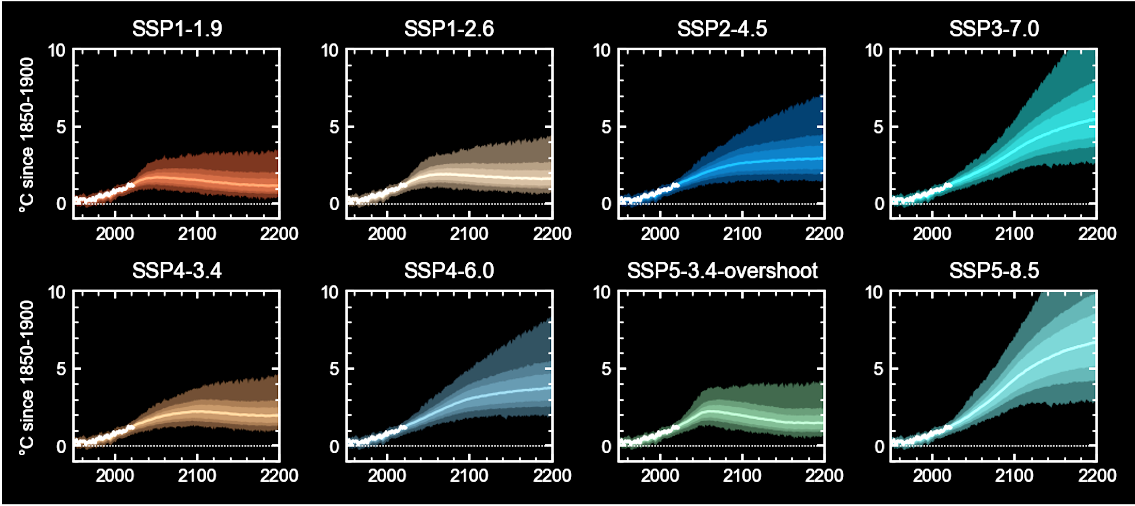fair model
The Finite Amplitude Impulse Response reduced-complexity climate model
The fair model is a reduced-complexity climate model designed to produce probabilistic projections of global mean surface temperature (and other variables) given input emissions, greenhouse gas concentrations or radiative forcing, in a fraction of a second.
fair includes simplified representations of the uptake of emitted CO2, methane atmospheric chemistry, aerosols, ozone and land use change based on simplified relationships calibrated on Earth System Models.
fair is written in python and can be obtained through conda-forge, pip, or installed from source. See the installation notes in the documentation.
You can also run a very simple example interactively using Binder.

What’s in a name?
The model I call fair is variously spelt FAIR and FaIR. The full name of the model is the Finite Amplitude Impulse Response (model). The first iteration was all-caps FAIR. We were made aware of a name clash with another model called FAIR in an overlapping scientific field. Therefore we changed the official acronym to FaIR and modified the full name (now “Finite-amplitude”…).
However. It can’t only be me that thinks the small “a” looks fugly, and there’s no good reason why “amplitude” is any less important than any other word. Therefore, I now prefer to call the model all-lowercase fair. Distinction from the other FAIR is maintained, and the lowercase form is how it is known within the python ecosystem. Practically, all three variants are in use and acceptable, and I’ve even seen it spelt Fair.
